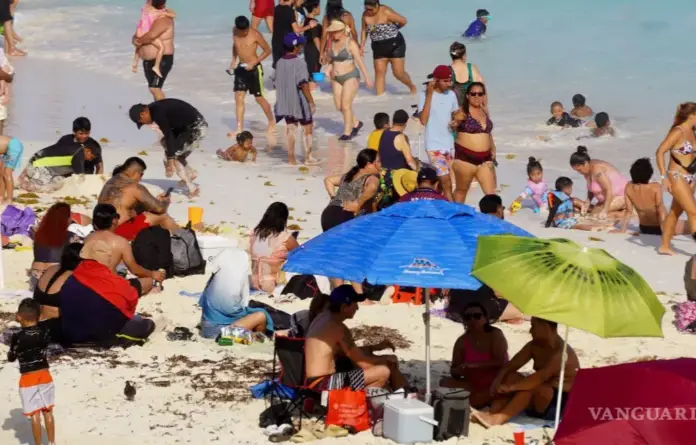Cancún, one of Mexico’s main tourist destinations, has seen a drastic reduction in the arrival of spring break tourists, a key segment for the tertiary sector in the Mexican Caribbean.
From hosting up to 120,000 students during its peak season, the number now ranges between 30,000 and 35,000, according to estimates by hoteliers and tour operators.
Unlike previous years, when they booked packages in advance, students are now traveling on a smaller budget and booking directly at the destination, with Americans still the largest influx in southeastern Mexico.
Jesús Almaguer, president of the Hotel Association of Cancún, Puerto Morelos, and Isla Mujeres, warned that future work is needed to recover this segment, due to its economic importance.
“Spring break is underway, perhaps not what it could have been, those periods of 100,000 or 120,000 students, but we’re doing well. We’re above 80% (occupancy), and we need to keep it that way, recharge our batteries, and start working on that segment for the future,” he noted.
Competition for Student Tourism
American and Canadian students who traditionally traveled to Cancún are now mostly opting for destinations within the United States, such as South Padre Island, Texas, as well as Panama City and Miami, Florida.
In Mexico, competition for these tourists is divided between Los Cabos, Puerto Vallarta, and Cancún.
Almaguer explained that this segment has diversified with the participation of online travel agencies (OTAs) and traditional tour operators, which has changed the hiring dynamics.
He explained that previously, students themselves organized their trips in groups and created small businesses to sell packages. However, he explained that all hotels and digital platforms have now entered the market, which has changed the competition.
Factors Affecting Tourist Arrivals
In addition to changes in traveler behavior, Almaguer noted that the travel advisory issued by the United States government last February also impacted the arrival of vacationing students this year.
The warning recommended avoiding Cancún, Playa del Carmen, and Tulum due to safety concerns.
“It’s like when we face a hurricane or a pandemic: we miss, value, and mourn the tourists when they leave. We already went through that stage of mourning with spring break, but it seems we sometimes forget. Tourists are very valuable to us,” the hotel leader acknowledged.
The new operating schemes make it difficult to accurately calculate the number of students visiting the Mexican Caribbean during this vacation period.
However, the decline in arrivals is noticeable, as tourism service providers in the Punta Cancún area, where most of the beach clubs and entertainment centers are located, are empty.
With smaller budgets and new ways to book their trips, vacationing students are no longer arriving in the same numbers as before to the Mexican Caribbean, while the domestic tourism sector is promoting new ways to attract foreigners to its destinations.
Source: vanguardia




